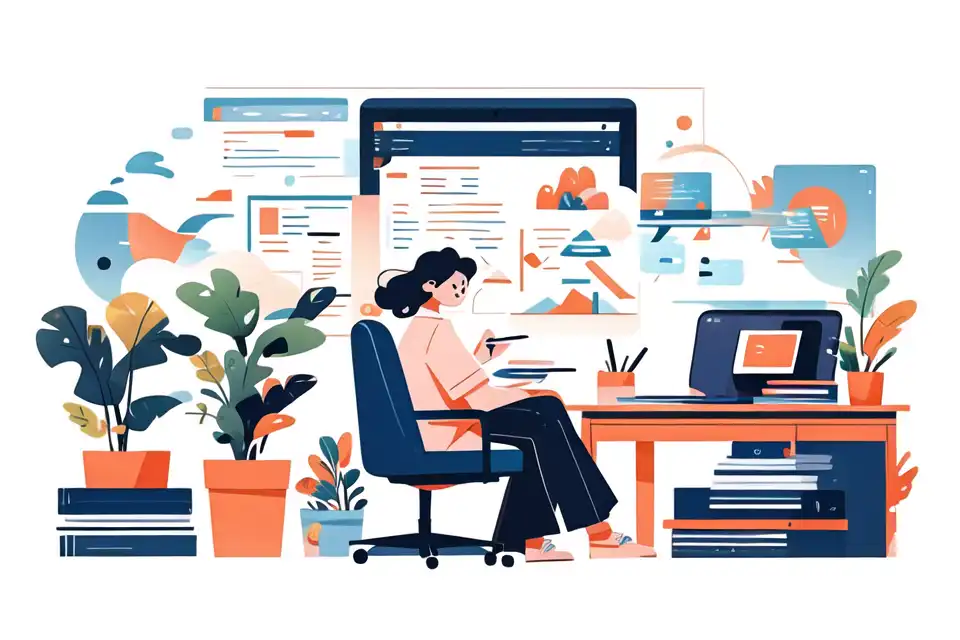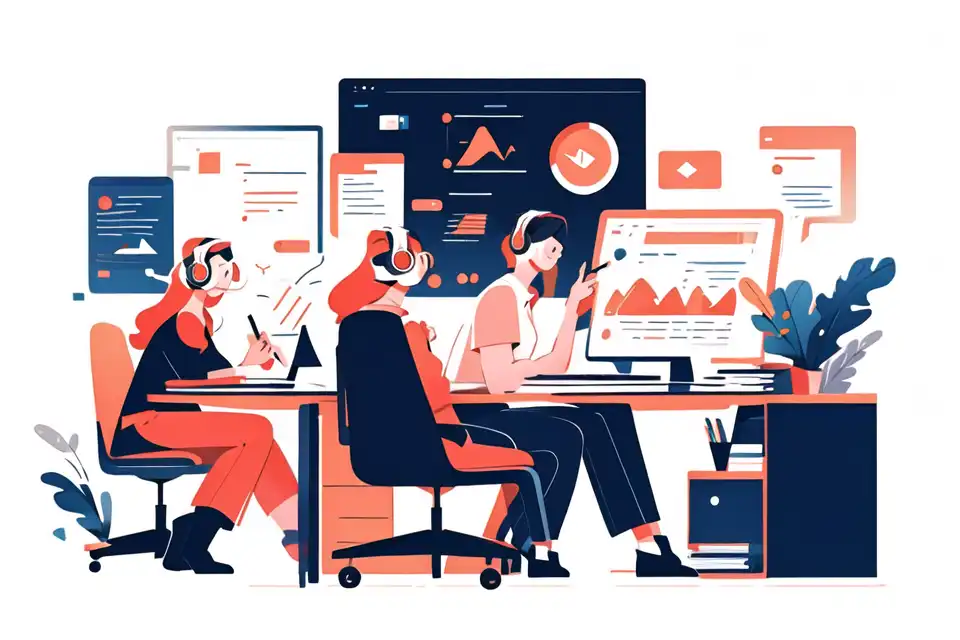How to Say No Worries Professionally
Master the art of professional communication in business settings with expert guidance. Learn how to say no worries professionally.
Try Lark for Free
In the realm of professional interactions, the ability to communicate reassurance in a respectful and empathetic manner is indispensable. Understanding how to convey "no worries" professionally can significantly influence the dynamics of workplace relationships and contribute to a cohesive, supportive work environment. This guide aims to provide a holistic approach to the concept of professional reassurance, emphasizing its significance and equipping professionals with the insights and strategies needed to utilize "no worries" effectively in various workplace scenarios.
Why is it important to understand how to say no worries professionally?
The Impact of Professional Reassurance on Relationships
Expressing reassurance in professional interactions can deeply influence the dynamics of relationships within a professional setting. When individuals feel understood and supported through effective reassurance, it can foster stronger connections and a sense of mutual respect.
Cultivating a Positive Work Environment through Effective Communication
The way in which "no worries" is conveyed can contribute to the overall atmosphere in the workplace. A culture of open communication and genuine reassurance fosters a positive work environment, influencing morale, productivity, and employee satisfaction.
Building Credibility and Trust with Clients and Colleagues
Professionals proficient in the art of professional reassurance have the potential to build and maintain trust with clients and colleagues alike. Adept communication of "no worries" can demonstrate reliability, empathy, and a commitment to addressing concerns, thus contributing to the establishment of enduring professional connections.
Use Lark Messenger to elevate your team communication.
Practical examples of dealing with how to say no worries professionally
Example 1
Example 1
-
A Typical Scenario When You Don’t Know How to Say No Worries Professionally:
In a business meeting, a client expresses concern about potential delays in project delivery, to which you respond with a casual "no worries."
-
Common Mistakes Made in This Scenario:
The casual expression may be perceived as dismissive, possibly undermining the client's concerns and the gravity of the situation.
-
Best Expression in Quotes for the Scenario:
"I understand your concerns, and we are committed to ensuring the timely delivery of the project. I appreciate your diligence in bringing this to our attention."
-
Example 2
Example 2
-
A Typical Scenario When You Don’t Know How to Say No Worries Professionally:
A colleague apologizes for a minor error, to which you respond with a flippant "no worries, it's fine."
-
Common Mistakes Made in This Scenario:
The response may downplay the significance of the colleague's apology, potentially diminishing the accountability and the opportunity for open dialogue.
-
Best Expression in Quotes for the Scenario:
"Thank you for acknowledging the oversight. I understand, and I appreciate your commitment to rectifying the situation."
-
Example 3
Example 3
-
A Typical Scenario When You Don’t Know How to Say No Worries Professionally:
A team member expresses concern about meeting a tight deadline, and you swiftly reply with an ambiguous "no worries."
-
Common Mistakes Made in This Scenario:
The vague response may fail to convey genuine support or acknowledgment of the team member's challenges, potentially undermining their confidence.
-
Best Expression in Quotes for the Scenario:
"I understand the pressures, and I'm here to support you in achieving our goals. Let's collaboratively identify any obstacles and work towards a solution."
-
Example 4
Example 4
-
A Typical Scenario When You Don’t Know How to Say No Worries Professionally:
When a client raises a concern about the quality of a deliverable, responding with an upbeat "no worries, it's all good."
-
Common Mistakes Made in This Scenario:
The overly casual response may overlook the client's perspective and fail to address their specific concerns, potentially risking the client's confidence in the professional relationship.
-
Best Expression in Quotes for the Scenario:
"I value your feedback, and we are committed to ensuring that the deliverable aligns with your expectations. Your insights are integral to delivering the quality you deserve."
-
What are the consequences of not knowing how to say no worries professionally?
Impact on Professional Relationships
The inability to effectively convey reassurance can strain professional relationships, leading to potential misunderstandings, decreased trust, and communication barriers.
Potential Misinterpretations and Miscommunication
Inadequate reassurance may result in misinterpretations, where genuine concern or feedback is not appropriately acknowledged, potentially leading to escalated tensions and unresolved issues.
Undermining Professional Credibility
Failure to convey reassurance professionally can undermine one’s credibility in the eyes of clients, colleagues, or team members, impacting future collaborations and the overall perception of one’s professionalism.
Learn more about Lark x Communication
Use Lark Messenger to elevate your team communication.
Methods of phrasing how to say no worries professionally
Method 1: Employing Positive Affirmations
Utilize positive affirmations and reassuring language that convey empathy, understanding, and a supportive stance while addressing concerns or issues.
Method 2: Utilizing Empathetic Language and Tone
Infuse reassurance with empathetic language and tone, demonstrating genuine understanding, respect, and a willingness to engage in open dialogue.
Method 3: Tailoring the Reassurance Based on the Situation
Customize the manner in which reassurance is communicated, aligning it with the specific context, relationship dynamics, and the gravity of the concerns raised.
Do's and dont's when you don't know how to say no worries professionally
Do's
- Demonstrate Empathy and Understanding
- Empathize with the concerns raised, seeking to understand the underlying reasons and emotions associated with the situation.
- Use Clear and Assuring Language
- Employ language that clearly communicates support, understanding, and a commitment to addressing the concerns effectively.
- Follow Up with Appropriate Actions
- Proactively follow up on the reassurance provided, ensuring that the concerns are addressed, and further support or clarifications are extended as needed.
Don'ts
- Minimize the Concerns of Others
- Avoid downplaying or dismissing the concerns raised by colleagues, clients, or business partners, as it may undermine the significance of their perspectives.
- Using Dismissive or Casual Language
- Refrain from employing flippant or overly casual language when addressing concerns, as it may diminish the authenticity and professionalism of the reassurance.
- Failing to Provide Further Support or Clarifications
- Ensure that reassurance is substantiated by subsequent actions, support, or clarifications, and not left as a mere verbal expression.
Conclusion
Effective communication of reassurance, particularly when expressing "no worries," underpins the foundation of meaningful professional relationships and interactions. Mastering the art of professional reassurance contributes to a harmonious work environment, promotes trust, and nurtures enduring professional connections. By understanding the nuances of conveying reassurance and implementing the strategies outlined in this guide, professionals can establish themselves as empathetic and reliable communicators, fostering an environment of understanding, support, and collaboration.








